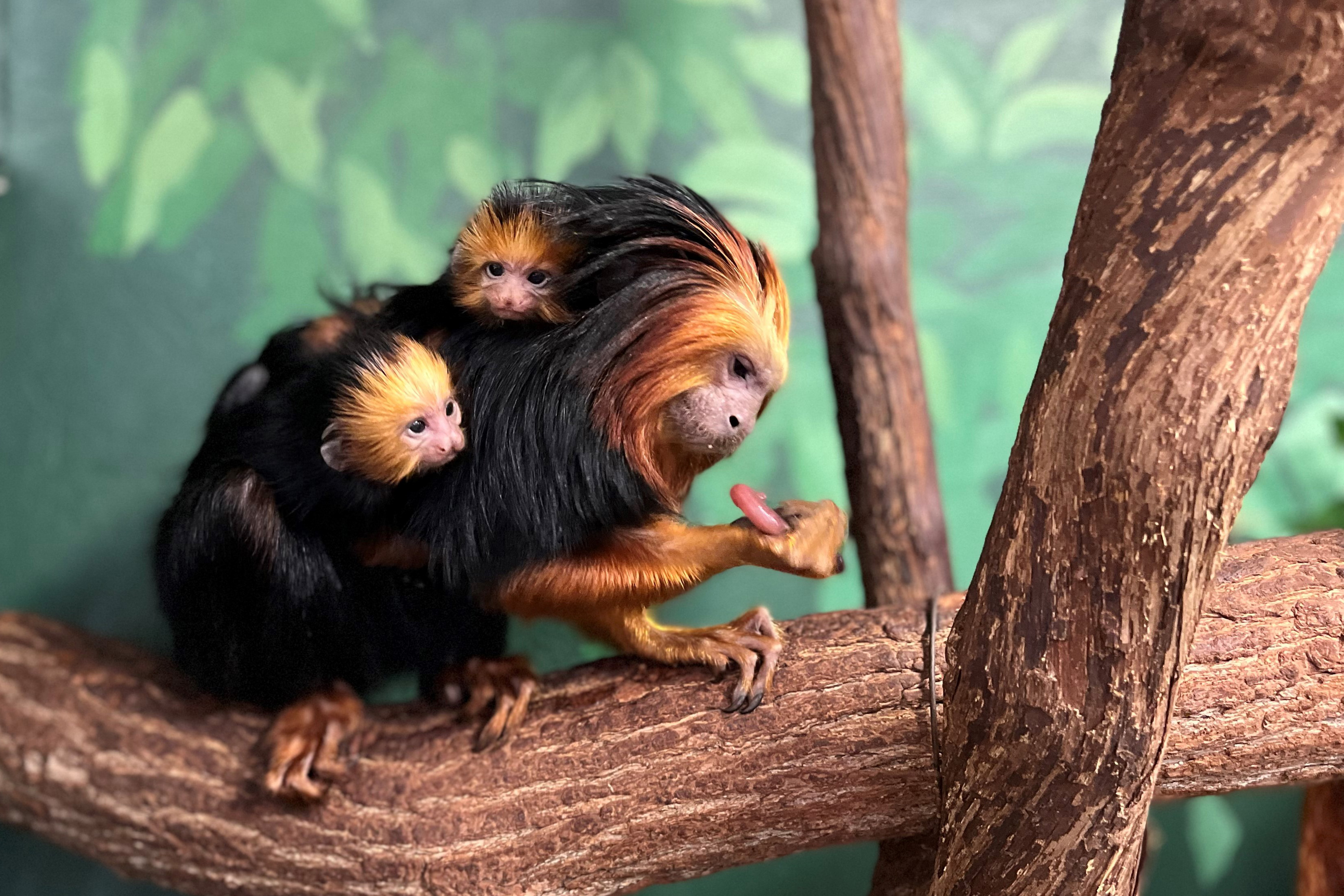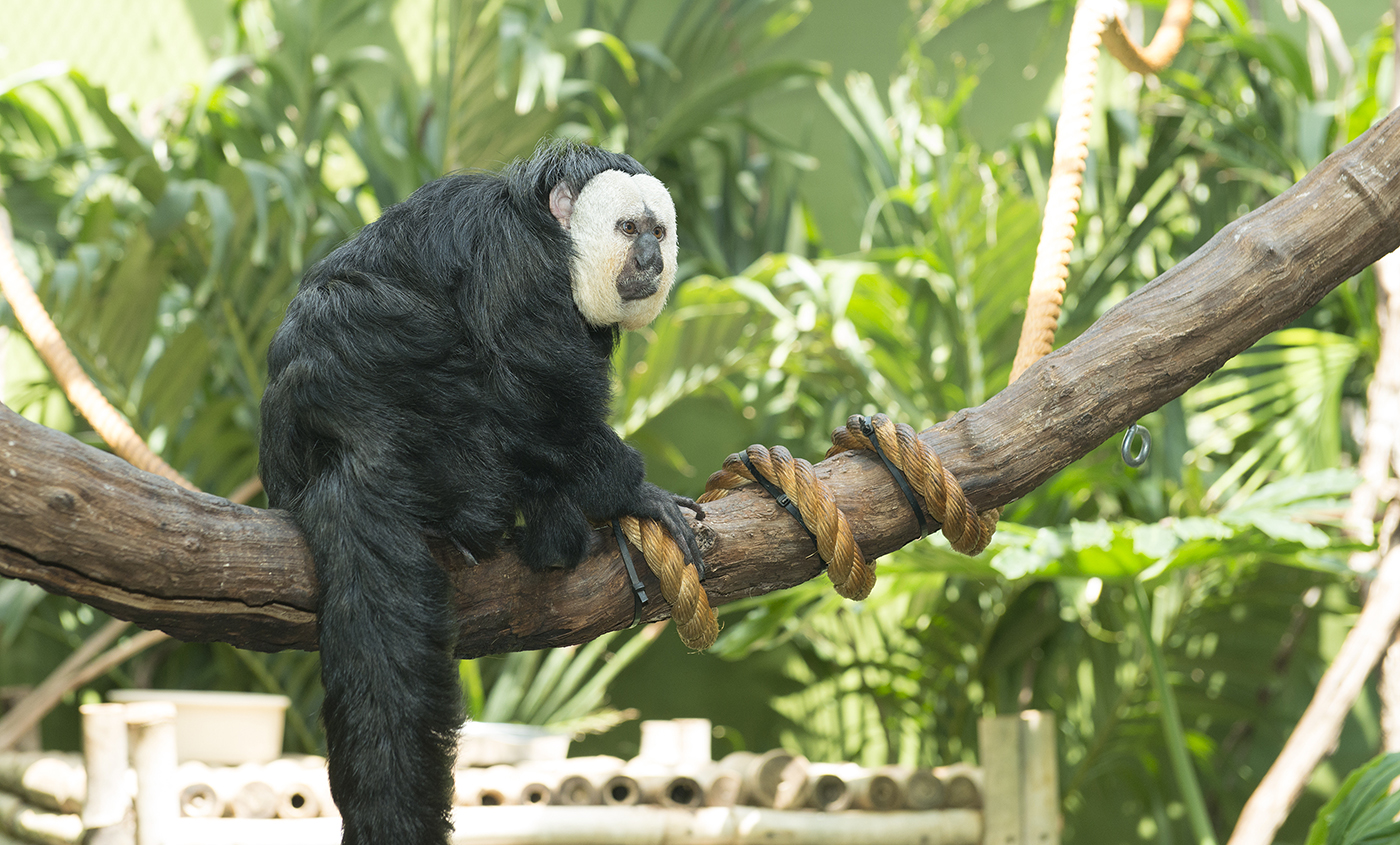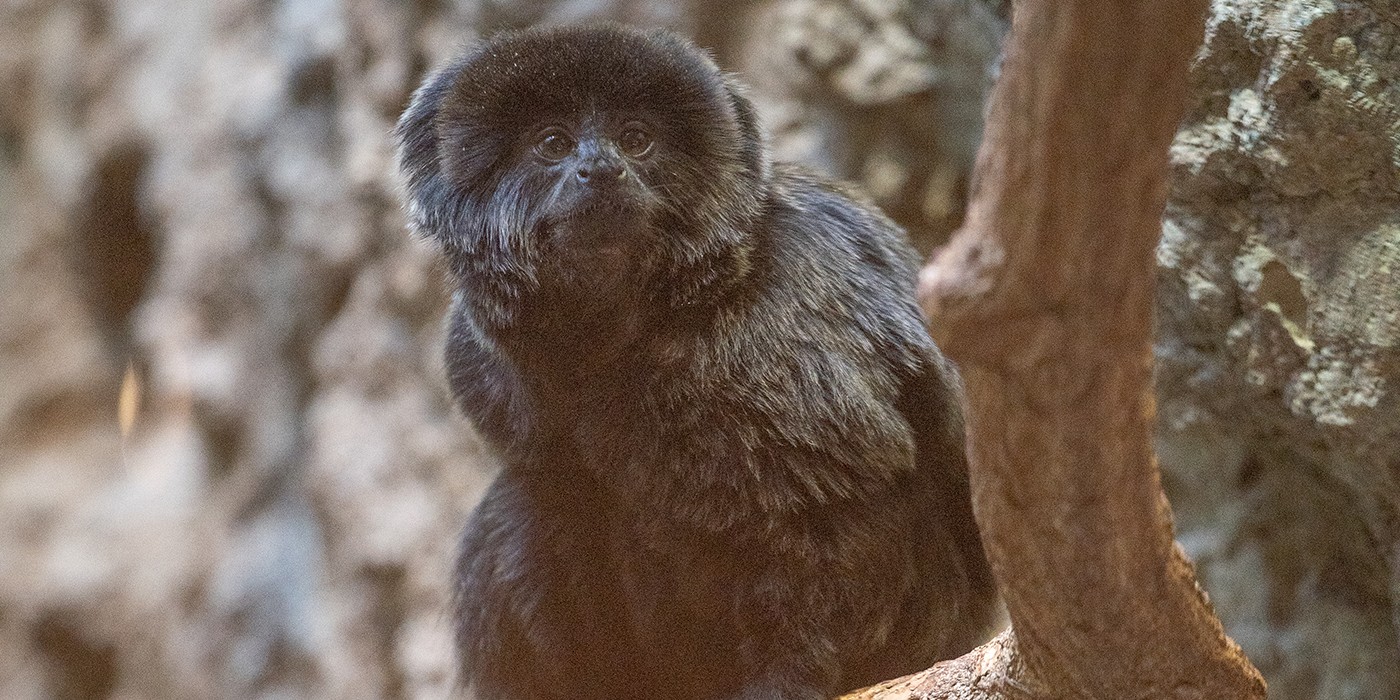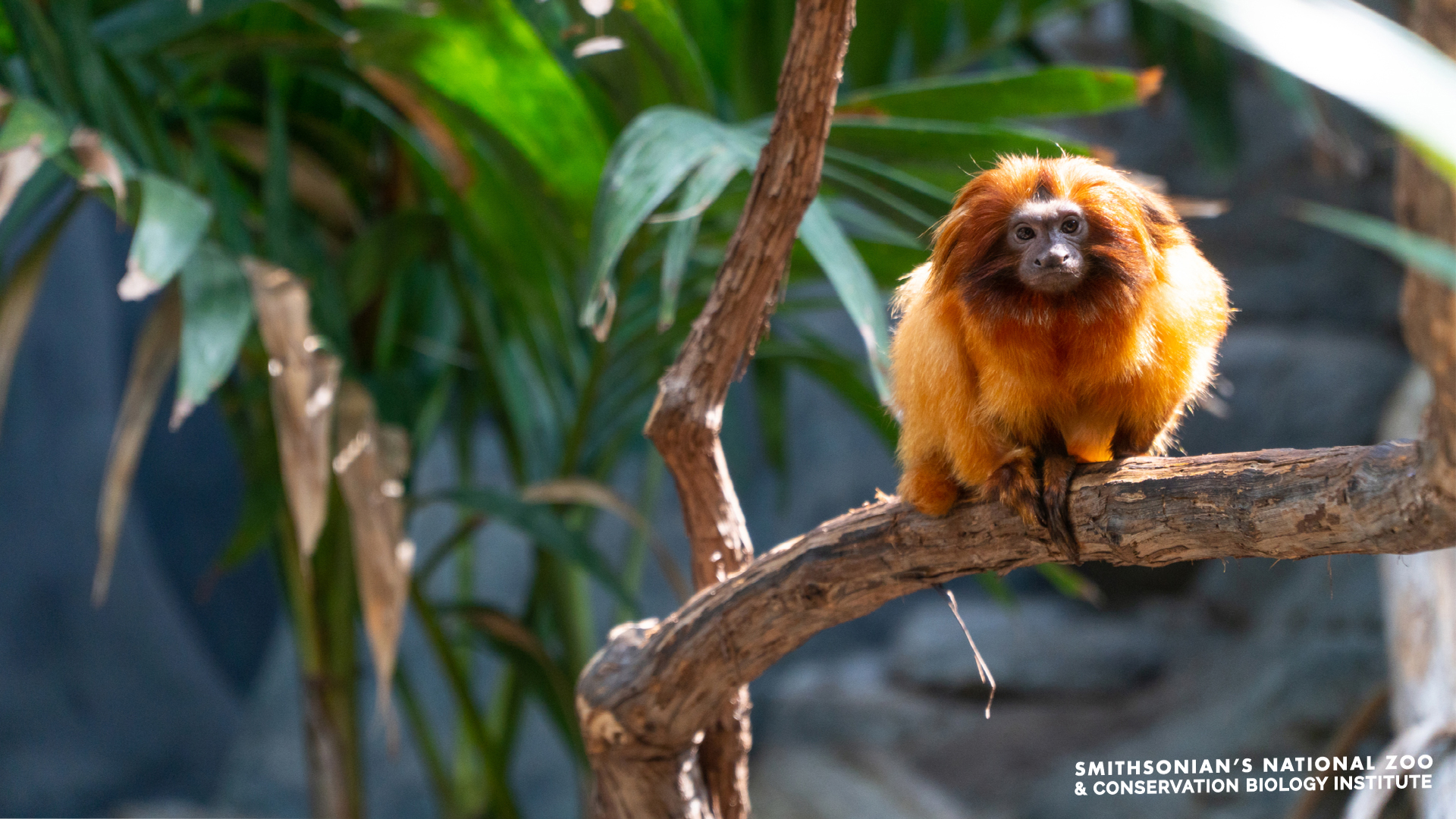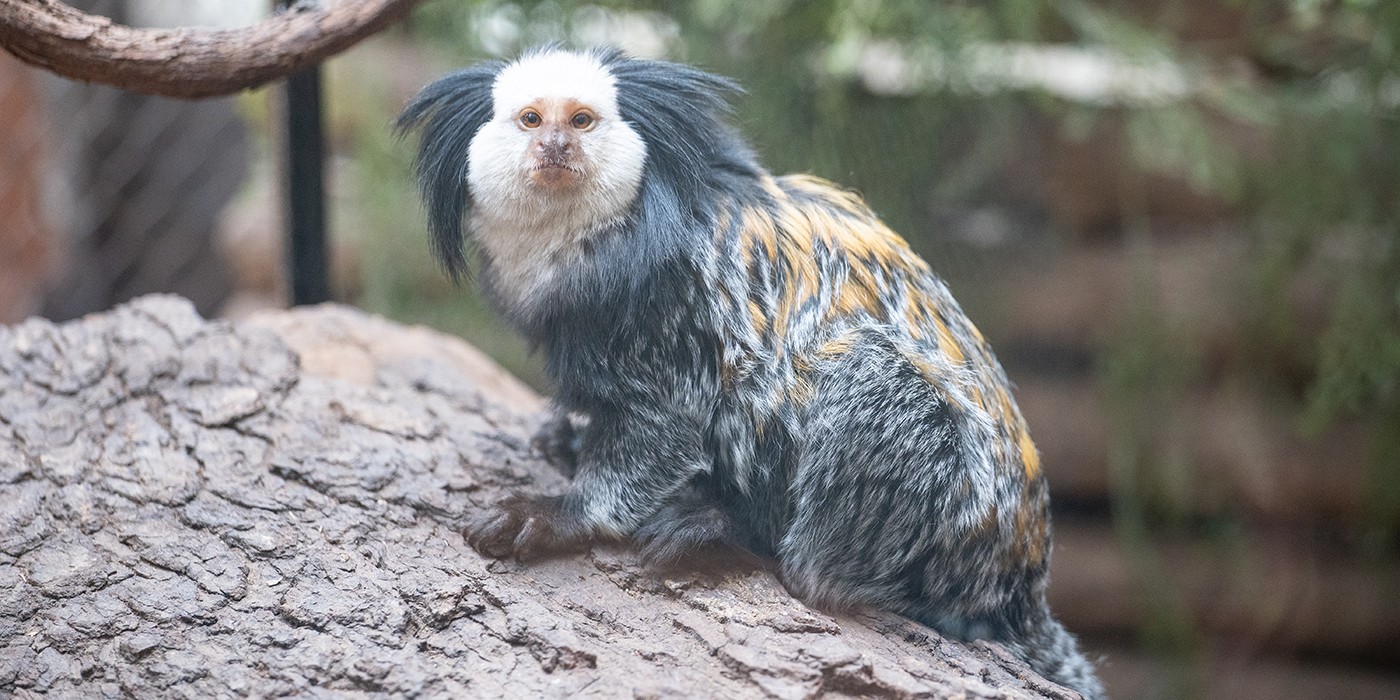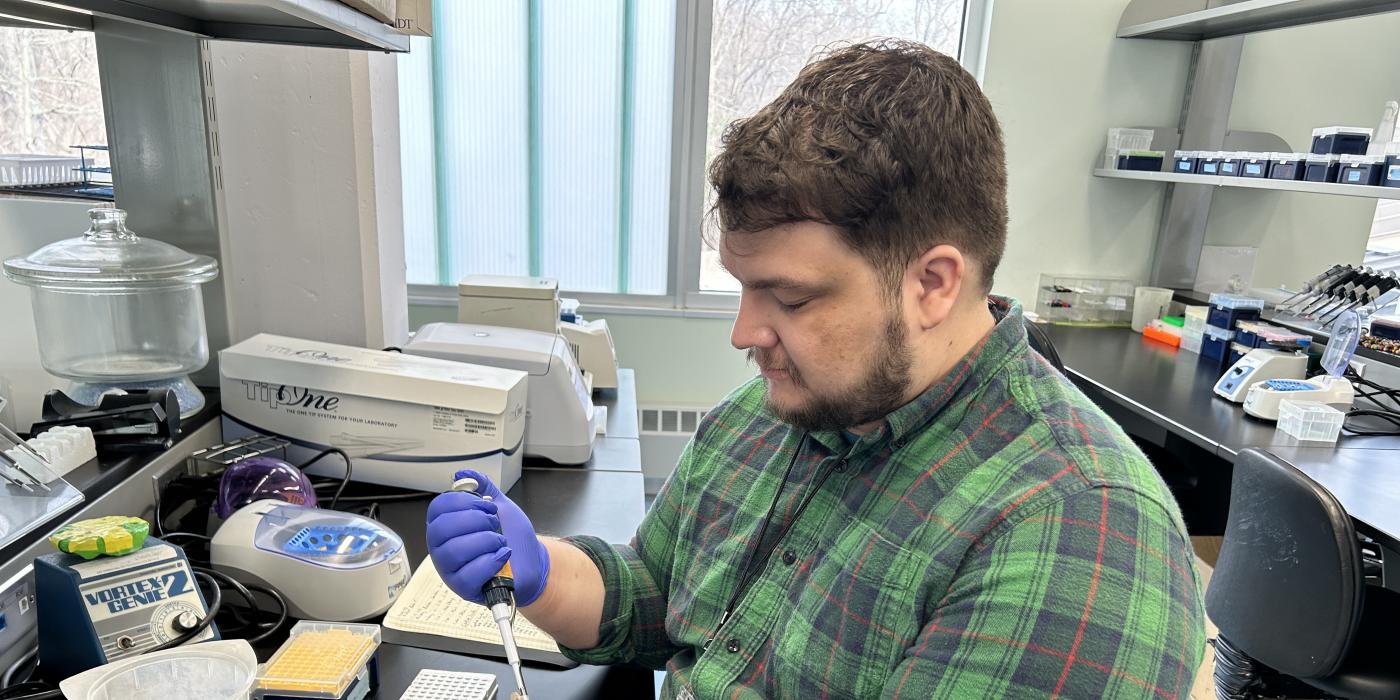Even Monkeys Should Eat Their Vegetables!
Did your parents ever tell you to always eat your vegetables? It turns out monkeys have to, too!
Microbiologist Sally Bornbusch, Ph.D. and clinical nutritionist Erin Kendrick, two authors of a study published earlier this year in the journal FEMS Microbiology Ecology, examined the diets of a range of primates at the Zoo to understand how a reduction in dietary sugar might impact the animals. They say the results were more interesting than they expected.
Kendrick explains the study was born out of a desire to reduce the sugar intake for some of the Zoo’s primates, namely the golden-headed lion tamarins, golden lion tamarins, pale-headed saki monkeys, Geoffroy’s marmosets and Goeldi’s monkeys.
“We can see problems associated with high-sugar diets such as diabetes, heart disease, obesity, dental cavities and potentially some behavior issues in primates in human care," Kendrick said. "To avoid these, we wanted to make the diets more appropriate based on the animals’ own natural diet history.”
All five species included in the study are considered frugivorous to some degree, meaning they eat predominantly fresh fruits. But according to Kendrick, the fruit the animals would have eaten in the wild are significantly different compared to what is commercially available. Wild fruits tend to be higher in nutrients like protein and fiber, while having a lower sugar and water content than fruits we might buy at a grocery store. You can thank humans for that.
At the most basic level, sugar molecules serve as a main source of energy for living beings. As such, humans have evolved to crave sugar and seek it out, even to the point of cultivating our fruits and vegetables to reduce bitterness and increase sweetness. Through nutritional analysis, the research team determined cultivated vegetables are closer nutritionally to wild fruits.
“It’s not an exact match,” Kendrick noted. “Vegetables are still lower in fiber than wild fruits would be, but they’re about as close as we can get commercially. We can’t go out into the wild to collect fruits; that’s not feasible from a fiscal or conservation standpoint.”
The team decided to switch the primates to a primarily vegetable-based diet as a result of these findings. Although the primates’ caloric intake remained stable, their diets were lower in sugar and higher in protein. All of the animals maintained their ideal body condition and energy levels, and several of the animals included in the study successfully bred, so the dietary change didn’t create any fertility issues.
“We know they miss the fruit. It is still a high-reward food item we can use for things they're training for, such as taking medication and participating in their care,” Kendrick said. “But overall, we haven’t seen any issues since we made the change.”
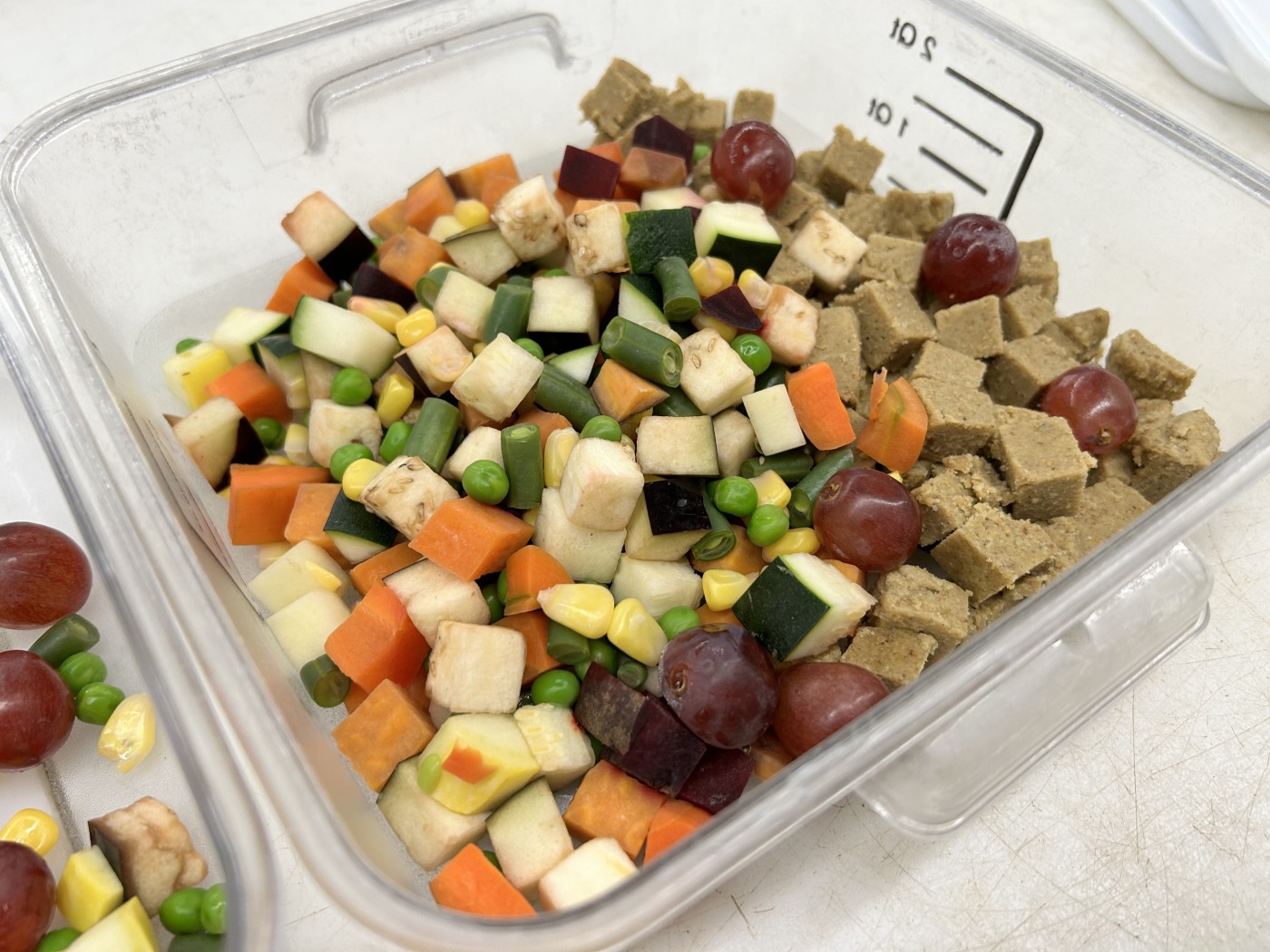
You Are What You Eat
Humans and other animals are never truly alone; we have trillions of microbes with us at all times. Colonies of beneficial bacteria live on our skin and inside of us, especially in our gut. This symbiotic relationship—one where both the host and the microbes benefit—is important. For example, primates (including humans) haven’t evolved to be able to digest plant fiber very well. Instead, our microbes do it for us. When gut bacteria break down or ferment plant fiber, they create byproducts and compounds that help improve overall health. Foods and nutrients which promote the growth of beneficial bacteria are known as prebiotics.
“We knew that upping the fiber and decreasing the sugar would have an effect on the gut microbiome,” Bornbusch said. “A lot of evidence shows prebiotic foods promote a healthy gut and can reduce inflammation. But we found that not only did the dietary change shift the microbiome, but it also improved the microbiome’s ability to help the animals stay healthy.” Specifically, the team found the decreased dietary sugar and increased fiber resulted in more fiber-degrading bacteria in the monkeys’ gut microbiomes.
Microbiologists found another interesting microbe marker: phylosymbiosis, which “basically means there is co-evolution between the host and its bacteria” according to Bornbusch. Phylosymbiosis indicates how the history of the animal and its microbes are linked.
“We expected all the monkeys’ gut microbiomes would be pretty similar, because they live in the same building, they eat very similar diets and they’re all relatively closely related in terms of phylogenetics. We didn’t expect to find phylosymbiosis,” Bornbusch said. “We found all of them have different microbiomes, which was a bit of a surprise. There was evidence of their evolutionary history and different ecologies in their microbiomes that made them different, even when they were in very similar environments here at the Zoo.”
Despite the similarities of the primates' diets in human care, Kendrick says there are some key differences between the species.
“Even though they are closely related, and we feed them similarly at the Zoo, they do have different diet histories. They go from frugivorous all the way to quite insectivorous and even eat things like gums. When you actually set them side by side, they’re not all the same, even in the wild. It makes sense what we found, even though it was surprising based on their housing situation.”
Even with the trials completed, nutritionists will wait to make major diet changes for primate species across the Zoo.
“Ultimately, we’ll have to wait, over time, to see if the health patterns previous to this change look different to after the change,” Kendrick said. “Either way, we’re implementing ‘best practices’ changes based on the information we have to hopefully make better decisions for our animals.”

